The Girl on the Shopping Bag
Barbara Adler Was a Face of the 2000s Fashion Dream. Her Story is the Nightmare Behind It. Abercrombie & Fitch and Victoria's Secret Exposed
I was always excited when the Victoria’s Secret summer catalog arrived at my parents’ doorstep. I’d take a copy out to the back deck, stretch out on a flimsy lounge chair, and flip through the pages with my body lathered in Australian Gold tanning oil.
This was before Pinterest. Before Lizzo made body positivity part of the mainstream. Back when “thinspiration” was quietly passed around between high school girls in upstate New York hallways. I’d tear out these glossy photos of Alessandra Ambrosio and Adriana Lima modeling the latest floral-print bikinis and tape them to the refrigerator—using family magnets to hold up my unattainable beauty standards. Their airbrushed bodies hovered over the snack drawer and whispered “nothing tastes as good as skinny feels,”reminding me to put down the after-school Lunchables.
Twenty years later- and summer around the corner- I’m sitting on my pink couch with the same insecurities I had as a teenager, still living with the pooch I swore I’d lose before graduation. But now, I’m on the phone with a former Victoria’s Secret model- one I likely had taped to my fridge, and this time, I’m not interested in her diet tips.
These days, the pursuit of truth matters more to me than the pursuit of a six-pack. As more disturbing stories come to light in the media, shattering the innocence of our childhood obsessions, all I’m interested in learning is: What was really going on behind the fashion brands that defined our youth?
When news broke Friday morning that former Abercrombie & Fitch CEO Mike Jeffries might dodge trafficking charges by claiming dementia, my heart sank. “ARE YOU KIDDING ME?!” I screamed at my phone, while reading the TMZ headline. Another chapter in the same story- power protecting power, while dozens of victims are left with nothing but shame.
Yesterday, a friend connected me with Barbara “Stoyanoff” Adler- an Abercrombie & Fitch and Victoria’s Secret model from the peak Y2K era, who worked alongside icons like Alessandra Ambrosio and Adriana Lima at the height of their fame. We hopped on a call, and for an hour, she peeled back the layers of her modeling career. Memory by memory, she walked me through the disturbing things teenage girls had to do to land a gig with these brands- revealing a world far darker than what we saw in the ads.
It wasn’t just cigarettes and genetics.
It was submission. Sacrifice.
Selling your soul to evil gatekeepers controlling the catwalk.
If you wanted to become an Angel, you had to go through hell.
It was a devil’s deal- sealed in lace, powered by shame, and rewarded with feathers.
And of course- like so many fashion stories from that era- it all comes back to Epstein.
LISTEN TO FULL PODCAST W/ MODEL BARBARA “STOYANOFF” ADLER:
The Day in the Life of an Abercrombie & Fitch Model
Everyone wanted to be the girl on the Abercrombie bag.
Barbara “Stoyanoff” Adler was the girl on the Abercrombie bag. And not just the bag- she was the girl on posters, buses and perfume displays. Her face hung larger-than-life in malls across America.
At just 15, she was living the dream most teenage girls only fantasized about: shooting with top photographers, jet-setting the world, and posing for some of the most defining campaigns of the early 2000s. Victoria’s Secret, Abercrombie & Fitch, Clinique- you name it. Barbara’s portfolio is packed with black-and-white receipts.
Even though you’d expect Abercrombie models to earn top dollar—especially given the steep price tags on their signature stonewashed denim—their rates were surprisingly low.
She made $800 a day posing for Abercrombie- low, she noted, compared to her $25,000-a-day Target contract. “Naomi Campbell said she wouldn’t get out of bed for less than $10,000.” Barbara didn’t like to, either.
Top modeling agents encouraged all their clients to book Abercrombie gigs. At the time, it was considered the gateway to exclusivity. “If you did Abercrombie, you could do anything. That part was true,” Adler said, and why stars like Lindsay Lohan and Ashton Kutcher appeared in A&F campaigns before their big breaks.
Adler worked on set with Kutcher during his 1997 campaign for the A&F Christmas catalog, where he appeared shirtless with a group of other fresh-faced, chiseled teens. She remembers how “cute” and “fun” he was back then. The catalog dropped just before he landed his breakout role on That ‘70s Show and rocketed to stardom.
While I was spending my allowance on overpriced Abercrombie t-shirts—$39.50 for a shirt with a borderline-dirty slogan that got me sent to the principal’s office- Adler was living the brand’s darker reality.
She wasn’t just wearing Abercrombie.
She was being asked to take it off.
Famous fashion photographer Bruce Weber, known for his hyper-sexualized black-and-white images that defined A&F, once asked his 15-year-old model, Barbara Adler, to take off all her clothes and get into the water for a shoot. She began skinny dipping in Biscayne Bay in Miami. The waves bounced off her naked body while Weber adjusted his lens. Her bare bum ended up making it to print- a lifestyle ad distributed globally for the world to see.
Even though Weber was “nice,” eventually, Adler began to dread shoots with him, knowing how it would end- with her butt naked, or stuck in a make-out session.
“At 15, I was naked, making out with boys for these shoots. They’d tell me to grind on them. At first, you think it’s professional- it’s Bruce Weber. But by the end of the week, I felt gross. Something wasn’t right,” she told me.
Over time, Adler started noticing that some of the directors on set seemed to get off on watching teenagers kiss. “It wasn’t about the art. It was about watching kids perform. And it turned them on,” she said.
What struck Adler as especially strange was the post-shoot arrangement in Miami: the male models were allegedly sent to stay at Bruce Weber’s house, while the female models were put up at the Delano Hotel.
Bruce Weber’s Sexual Assault Cases
In 2017, male model Jason Boyce sued Weber for inappropriate behavior including unwanted touching and kissing. A few days later a second model came forward and said he was also a victim of Weber, alleging that Weber preyed on him during a 2005 photoshoot. One month later, 15 additional male models accused the photographer of sexual harassment. The report notes that there was a “remarkable consistency” throughout all fifteen claims.
In 2018, five more models filed a lawsuit against Weber, alleging that he had exploited or sexually assaulted them. The legal complaint calls Weber a “serial sexual predator” and the lawyers representing the case described the photographer’s actions as sex trafficking.
Even though Weber denied all allegations, Abercrombie & Fitch dropped him as a photographer once the allegations became public in 2018. Now six years later, the CEO who dropped Weber to save his own face, is facing similar charges. - Substack
Abercrombie & Fitch CEO Mike Jeffries
Barbara Adler remembers meeting Jeffries, the CEO who was arrested on October 22, 2024 for sex trafficking and engaging in interstate prostitution tied to 15 alleged victims. Adler clarified that she was never sexually abused by Jeffries, noting that his known victims were all male and that he was openly gay.
“I barely recognize him now,” she told me. “He looks completely different.”
Over his three-decade reign at Abercrombie, Jeffries’ face changed as often as the seasonal collections- thanks to a string of botched cosmetic surgeries. For a man obsessed with everyone else’s beauty, he somehow managed to make himself uglier each passing year.
After Weber’s arrest in October 2024, Adler hired popular Texas attorney Tony Buzbee (the Houston lawyer representing over 200 of Sean “Diddy” Combs’ victims) to represent her in a case against Abercrombie and her former agency, IMG.
Jeffries, 80, his partner Matthew Smith, 61 and a middle-man named James “Mr. Cook” Jacobson were arrested. The three men allegedly held numerous “sex events” in England, France, Italy, Morocco, St. Barts, New York City and the Hamptons between December 2008 and March 2015. Prosecutors reported that the men would coerce and pay young men to attend these “sex events” by promising them modeling opportunities, all while using force, fraud and coercion to engage in "violent and exploitive" sexual acts. According to prosecutors, they “employed coercive, fraudulent and deceptive tactics in connection with the recruitment, hiring, transportation, obtaining, maintaining, solicitation and payment of the men to engage in commercial sex.”
Victoria’s Secret Models Party at Epstein’s
Becoming a Victoria’s Secret Angel didn’t just mean working the runway.
It meant working the egos and appetites of powerful old men who controlled who was worthy of oversized wings.
Adler told me she was often invited to parties at Jeffrey Epstein’s Manhattan townhouse—a property once owned by Les Wexner, the billionaire behind L Brands, the parent company of Victoria’s Secret, Abercrombie & Fitch, Bath & Body Works, and more.
She remembered these nights vividly: rooms filled with rich, powerful executives and barely-legal models performing sex acts as some grotesque initiation rite. One night stood out in particular: “A lot of these models were deficating on the table where T.R. was taking photos of them underneath the glass table.”
Yes, you read that correctly. New York’s most beautiful women were taking turns shitting on glass tabletops. The men behind these scenes were so warped by power and perversion, they managed to turn a defecation kink into a normalized party activity.
This wasn’t just about fetish. This was blackmail. They were creating leverage, disgusting, humiliating leverage, capturing the most embarrassing moments on film.
Imagine Two Girls One Cup shot on a Leica- with fashion’s dirtiest DP behind the lens collecting blackmail on teenagers.
These stories suddenly made Tyra Banks’ notorious critiques on America’s Next Top Model seem sweet as pumpkin pie. Tyra might’ve once shamed a girl into closing her teeth gap—but at least she wasn’t filming falling feces at 3 a.m. and calling it “art.”
Models Gone Missing Theory
Adler said the models who made the most money were usually doing more than full-time editorial work. The ones with the deepest bank accounts were usually backed by powerful men who attended these after dark industry parties looking for a sugar baby. Some of these men were connected to Jeffrey Epstein and the late Jean-Luc Brunel, the notoriously slimy Miami modeling agent who died by suicide in a Paris prison at age 75. Before their parallel suicides, Epstein gave Brunel $1 million to launch MC2, a modeling agency in Miami infamous for recruiting Eastern Bloc girls without visas- young women who were then flown to private islands where “they could do whatever they wanted to them.”
“No one was there to account for them,” Adler said. She believes that’s why so many of the girls ended up missing.
The Les Wexner Connection
While Jeffries’ case may soon be dropped due to his newly claimed dementia diagnosis, it’s important to remember who put him in the driver’s seat: Les Wexner.
“Wexner hired Mike Jeffries to be the CEO of Abercrombie & Fitch, officially handing the keys over to him in 1992.
SEC filings from the early nineties and mid 2000’s list Epstein as one of the three trustees of of The Wexner Foundation, as well as several of Wexner’s other charitable organizations, including Arts Interests, Health and Science Interests, Health and Science Interests II, The Wexner Children’s Trust II, and International Charitable Interests.
Epstein was Wexner’s power of attorney in 1991, which gave him unmitigated control over all of Wexner’s assets, allowing him permission to sign checks, buy and sell property, and borrow money on Wexner’s behalf. Epstein remained Wexner’s personal money manager for two decades until Wexner cut ties with Epstein in 2007 after Palm Beach arrest for soliciting a minor for prostitution.
Wexner famously sold Epstein a $20 million New York City townhouse for pennies on the dollar, a mega real estate property that was cited in reports by Epstein victims as a regular location for alleged abuse. In 1996, Maria Farmer claimed she was assaulted by Epstein while working on an art project at Wexner’s Ohio estate where Epstein also lived. Allegedly, Epstein’s famous private jet, dubbed “Lolita Express,” was a plane previously owned by Wexner and used to shuttle young women around the world for Epstein, and LBrand’s, benefit.
When Epstein was arrested, Wexner sent a letter out to employees stating he was “NEVER aware of the illegal activity charged in the indictment” and “would never have guessed that a person I employed more than a decade ago could have caused such pain to so many people.” He also claimed he himself was a victim of Epstein, claiming that Epstein stole $46 million from him. Washington Post reporter Sarah Ellison called out Wexner for never pressing charges against Epstein, noting that it is in Wexner’s character to be “litigious” and not to let something like this slide.
When trying to understand the dynamic between Wexner and Epstein, author Michael Gross explained their relationship by saying that “Epstein had a reputation for worming his way into the lives of older successful Jewish men.”
Former L Brands executives claim that in the mid 90s Epstein was trying to get involved in recruiting models for the Victoria’s Secret catalog and side stepping professional agencies.
As mentioned above in the Jeffries lawsuit, you’ll notice that Jeffries also had an alleged middleman that would recruit and vet men to bring back to Jeffries, acting as an agency, a typical pattern in these sex trafficking operations.
Wexner handed the keys of Abercrombie & Fitch over to Mike Jeffries in 1992 and for the next 20 years Jeffries revived the company’s finances while getting himself wrapped up into an international sex trafficking scandal of his own.” Substack
Mike Jeffries’ Creepiest Allegation:
Perhaps the most disturbing detail in one of many lawsuits against Mike Jeffries is the claim that he created fake Abercrombie & Fitch storefronts—elaborate sets made to resemble real retail spaces—then lurked in the shadows, waiting to emerge and seduce the vulnerable young men role-playing as store employees:
“A male victim, “Luke” came forward and told investigators he was taken into Jeffries’ presidential suite in a hotel in Spain in 2011 expecting that he was going to do a photoshoot.
"It was like a movie set of an Abercrombie store," he said.
He described the room being similar to the Abercrombie retail design: dimly lit with erotic photos of men’s abs on the dark walls. He said in the middle there was a group of assistants dressed in Abercrombie uniforms- a polo shirt, blue jeans and flip-flops, casually folding clothes pretending to be real employees.
Luke says he was offered the chance to model in an Abercrombie & Fitch ad campaign. All he had to do was fly from his home in Los Angeles to Madrid to meet Jeffries, a proposal he claims came from a modeling website with a man claiming to be a talent scout and executive assistant for Jeffries.
Luke said he was paid $3,500 in cash the night before the event, which he assumed was general spending money for his trip.
Luke claims Jeffries’ assistants started engaging in role-play making him act like one of the shirtless greeters you’d see at the local mall.
"It didn't seem like anything too out of the ordinary for me because even working at an Abercrombie store when I was younger, there was guys who would stand outside shirtless. That was like a trademark thing," says Luke.
Things got weird after he was told that two people were about to walk in and he had to impress them. Out walked Jeffries and his partner Smith, emerging from a corner of the room. Luke alleges the two men started touching him and Jeffries “forcibly kissed him” before the boss then performed oral sex on him.
"I was trying to avoid the whole situation as much as I could, but Michael (Jeffries) was very aggressive,” Luke said.
“I tried to say no repeatedly. And then I just got kind of convinced to do something. But I constantly was saying no, and I wanted to go.”
Luke, who identifies as straight, said he experienced a ton of shame once he got back to the US and didn’t report what happened because of the non-disclosure agreement he was forced to sign before the event and because he was embarrassed that he was taken advantage of by another man.” -- Substack
Suicide Rates in Models
Mental health was—and still is—a silent epidemic in the modeling world. The shame never fades; it stains even the most carefully kept Chanel 2.55 Reissue. You can own the finest handbag collection on Earth and still be carrying around trauma no luxury can cure.
“They promise you everything,” Adler said about the industry’s gatekeepers. “And then you have sex with them and they don’t follow through.” A tale as old as time in Hollywood.
“Why do you think so many models die?” she asked. “They commit suicide.”
In May, top South Sudanese model Ajak Deng posted a raw, tear-streaked Instagram video. Shaking and heartbroken, she described the emotional abuse she endured at IMG Models—the same agency Adler had been with for years.
“The people who work with you constantly tell you you’re a horrible person,” Deng cried. “If I do commit suicide, know that it’s because of you.”
Adler recalled the tragic death of Ruslana Korshunova—a Russian model who died in 2008 after plunging from a Manhattan high-rise. Ruslana had flown to Epstein’s island just two years before her death. Some believe whatever she witnessed there contributed to her decision to end her life.
Always Say No!
“If you wanted to be famous, you had to play the game,” Barbara Adler claims.
But Barbara didn’t play. Throughout her career, she rejected temptation.
“They manipulate your mind. If you don’t have a strong one, you’re f*****,” Adler said, crediting her Eastern European upbringing for her strong boundaries.
“I was raised by Russian-Bulgarian parents. My mom used to say if you’re eating McDonald’s, you’re eating human meat,” she joked. “That kind of thing keeps you grounded.”
Adler could say no because she wasn’t starving for fame.
“I just wanted to make money and retire by 30. I didn’t care about being famous,” Adler said.
“It’s a dirty business. Always say no,” was a motto she lived by.
But saying no had a cost. Certain photographers and casting directors started calling her difficult to work with. “They called me “Diva Babs” or just ‘the bitch.’ That’s what they called you when you didn’t give in.”
Still, Adler stayed in the industry. She left IMG and signed with NEXT Management. She found steady work in more wholesome corners of the industry- catalogs and print. At 22, she had enough money saved to buy her first apartment at 225 5th Avenue in New York, a building so upscale, her next-door neighbor was Chelsea Clinton.
Today, Adler lives in California, far from the cities that shaped her. But the memories follow: millionaires snorting coke off breasts, a man pissing on a woman with no regret, crawling out a window to escape a predator, and Diddy himself trying to recruit her at the Delano pool. Her stories are mostly dark— but none feel too dangerous to tell.
“It’s already out,” she said. “Everybody knows who’s who. Everybody knows who’s guilty.”
Barbara hopes that by sharing her story, other survivors carrying the weight of shame from their modeling days will feel empowered to speak up—and begin to heal from years of silence and industry abuse.
And here I thought the models on the shopping bags were the lucky ones.
Turns out, that was us.
We got to outgrow our Abercrombie phase.
The models had to survive it.
Full Podcast Here:
Follow Barbara Adler: Instagram




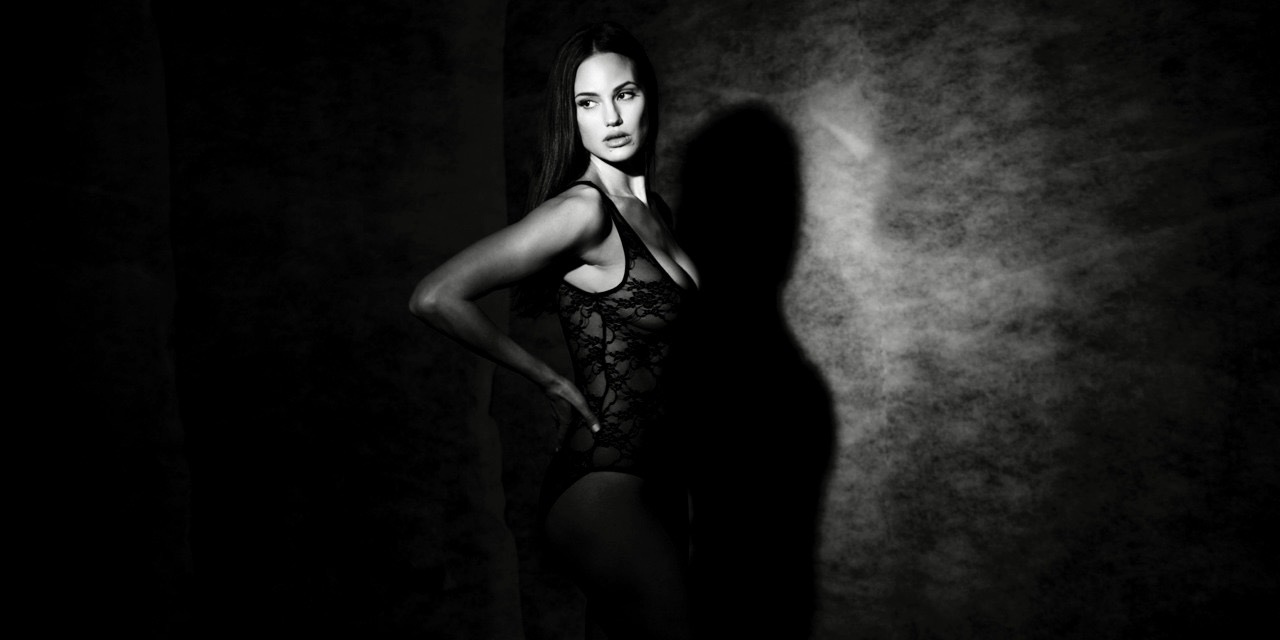




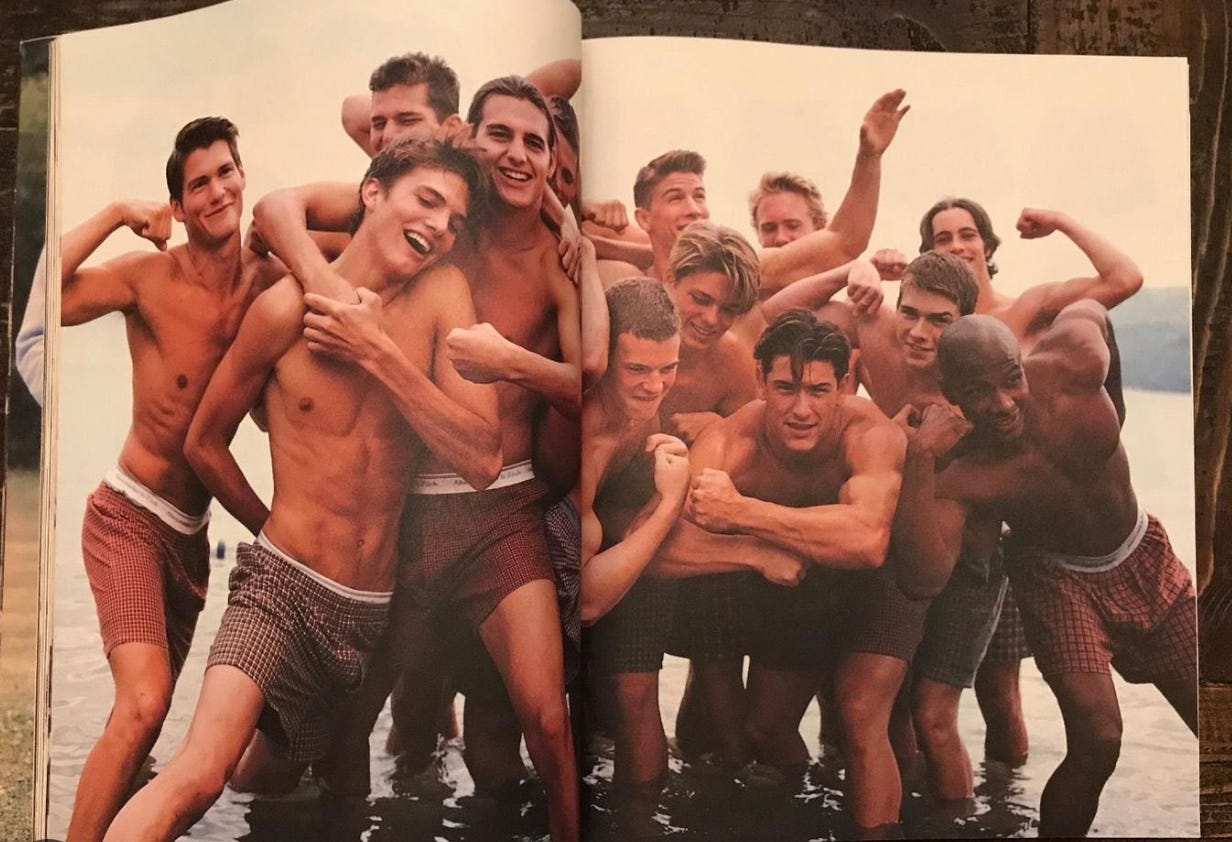



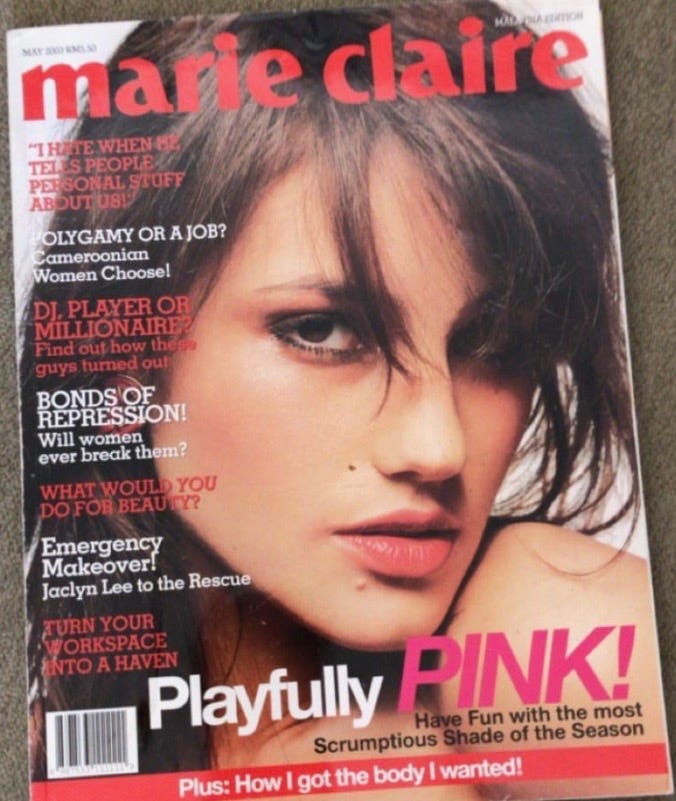



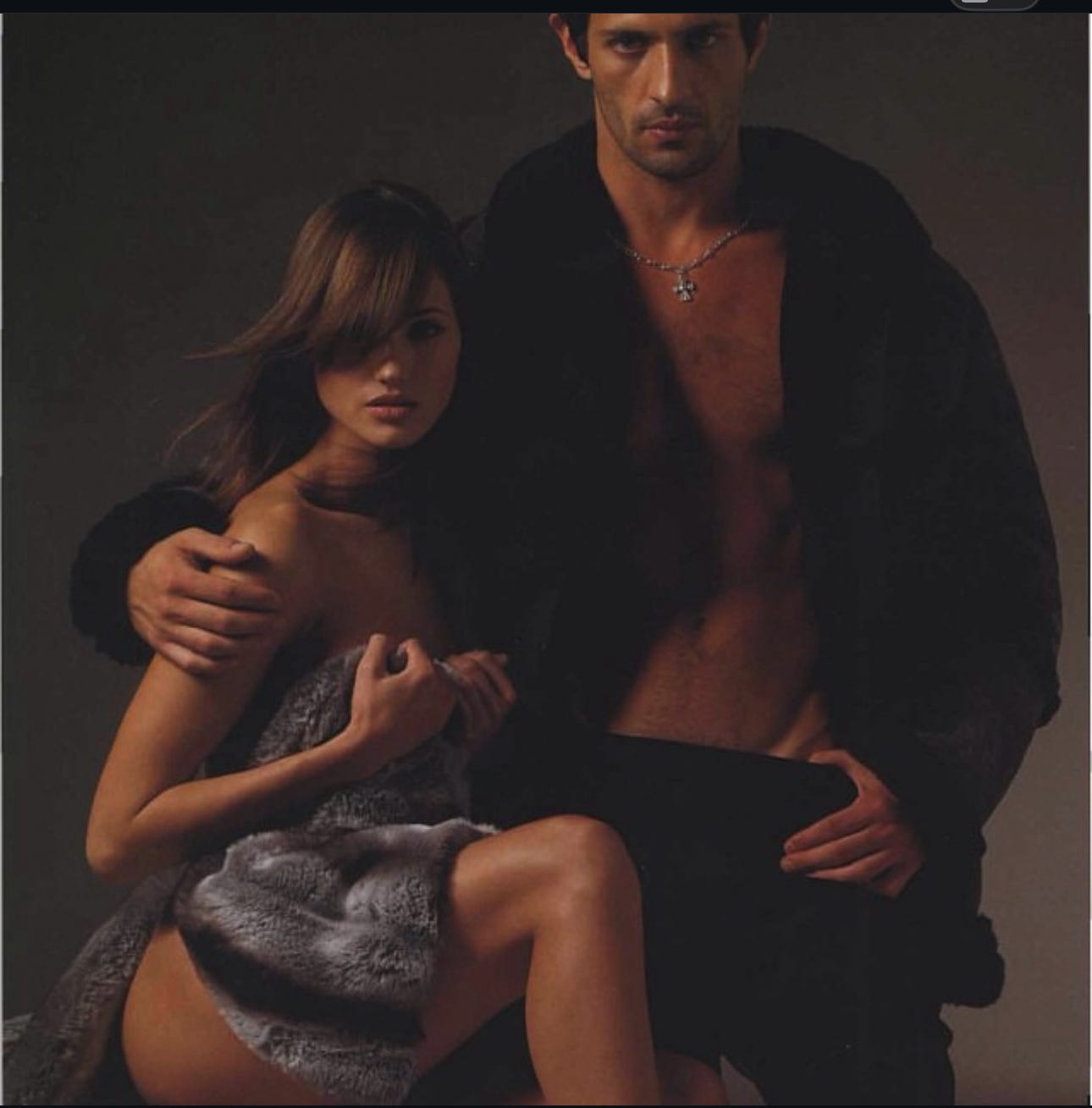


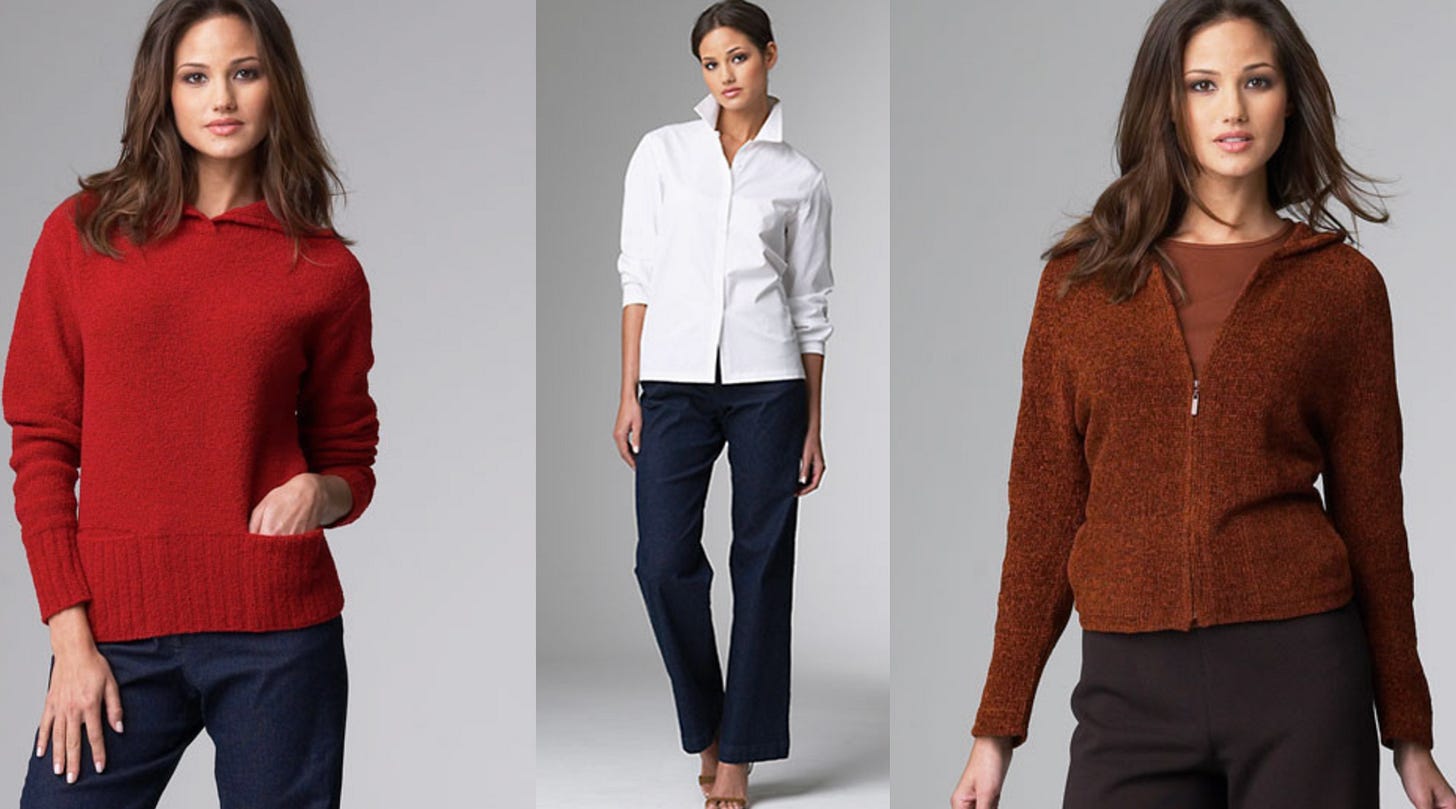

You should look into Ron Burkle. He trafficked my friend way back in the y2K era. She was a model. For some reason he is not ever named in these lawsuits. He is deeply tied to Epstein/Clinton/Wexner.
Emilie Diane Sawyer Hagen